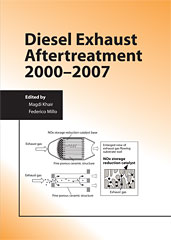Journal Article
Numerical Investigation on the Effects of Different Thermal Insulation Strategies for a Passenger Car Diesel Engine
2017-09-04
2017-24-0021
One of the key technologies for the improvement of the diesel engine thermal efficiency is the reduction of the engine heat transfer through the thermal insulation of the combustion chamber. This paper presents a numerical investigation on the effects of the combustion chamber insulation on the heat transfer, thermal efficiency and exhaust temperatures of a 1.6 l passenger car, turbo-charged diesel engine. First, the complete insulation of the engine components, like pistons, liner, firedeck and valves, has been simulated. This analysis has showed that the piston is the component with the greatest potential for the in-cylinder heat transfer reduction and for Brake Specific Fuel Consumption (BSFC) reduction, followed by firedeck, liner and valves. Afterwards, the study has been focused on the impact of different piston Thermal Barrier Coatings (TBCs) on heat transfer, performance and wall temperatures.

